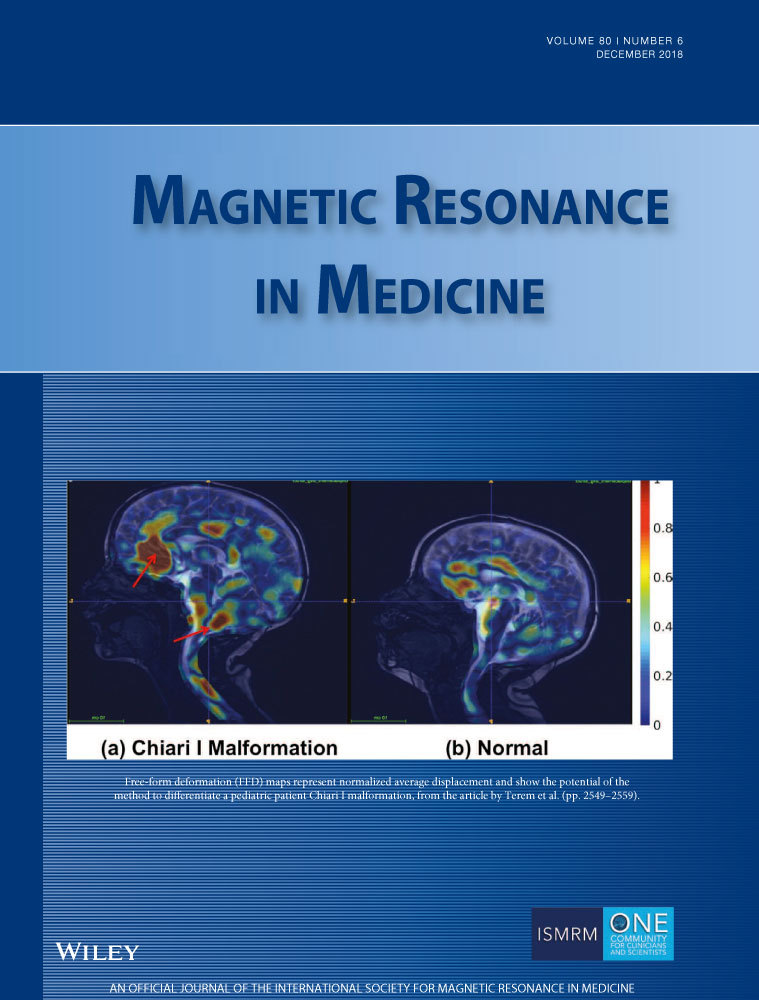In-plane “superresolution” MRI with phaseless sub-pixel encoding
Abstract
Purpose
Acquisition of high-resolution imaging data using multiple excitations without the sensitivity to fluctuations of the transverse magnetization phase, which is a major problem of multi-shot MRI.
Theory and Methods
The concept of superresolution MRI based on microscopic tagging is analyzed using an analogy with the optical method of structured illumination. Sinusoidal tagging is shown to provide subpixel resolution by mixing of neighboring spatial frequency (k-space) bands. It represents a phaseless modulation added on top of the standard Fourier encoding, which allows the phase fluctuations to be discarded at an intermediate reconstruction step. Improvements are proposed to correct for tag distortions due to magnetic field inhomogeneity and to avoid the propagation of Gibbs ringing from intermediate low-resolution images to the final image. The method was applied to diffusion-weighted EPI.
Results
Artifact-free superresolution images can be obtained despite a finite duration of the tagging sequence and related pattern distortions by a field map based phase correction of band-wise reconstructed images. The ringing effect present in the intermediate images can be suppressed by partial overlapping of the mixed k-space bands in combination with an adapted filter. High-resolution diffusion-weighted images of the human head were obtained with a three-shot EPI sequence despite motion-related phase fluctuations between the shots.
Conclusion
Due to its phaseless character, tagging-based sub-pixel encoding is an alternative to k-space segmenting in the presence of unknown phase fluctuations, in particular those due to motion under strong diffusion gradients. Proposed improvements render the method practicable in realistic conditions.
CONFLICT OF INTEREST
Klaas P. Pruessmann holds a research agreement with Philips Healthcare. He is a shareholder of Gyrotools LLC and Skope Magnetic Resonance Technologies LLC.




